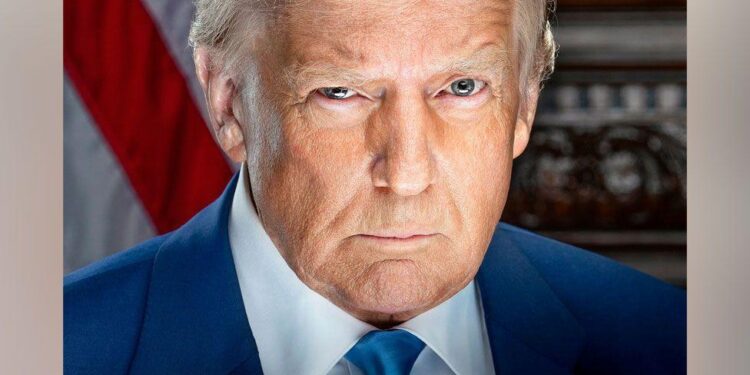Senior Trump administration officials are reportedly engaging in discreet discussions about the possibility of a meeting with North Korean leader Kim Jong Un during the president’s forthcoming trip to Asia. According to sources cited by CNN, these behind-the-scenes talks indicate a potential diplomatic overture amid escalating tensions on the Korean Peninsula. As preparations for the Asia tour continue, the prospect of direct engagement with Pyongyang raises questions about the administration’s strategic approach to North Korea and regional security.
Trump Officials Explore Potential Kim Jong Un Summit Amid Asia Tour
Senior Trump administration officials are reportedly engaging in discreet discussions about the possibility of arranging a high-stakes summit with North Korean leader Kim Jong Un during the upcoming Asia tour. The move signals a strategic pivot aimed at reviving diplomatic channels that have stagnated in recent years. Sources close to the administration suggest that preliminary groundwork includes assessing potential venues, agenda priorities, and coordinating with regional allies to ensure any engagement aligns with broader U.S. foreign policy objectives.
Key considerations under review include:
- Security protocols for both delegations
- Potential concessions regarding denuclearization
- Maintaining strong alliances with South Korea and Japan
- Timing relative to regional geopolitical events
| Proposed Summit Details | Status |
|---|---|
| Venue | Undisclosed Asian Location |
| Key Topics | Denuclearization, Sanctions Relief |
| Timeframe | Next 2 Months |
| Coordination | South Korea, Japan |
Strategic Implications of a High-Stakes Meeting with North Korea
The tentative discussions among Trump officials regarding a potential meeting with North Korea’s leader signal an intricate web of strategic calculations that go beyond mere diplomatic protocol. Such high-profile engagement could recalibrate regional security dynamics, compelling neighboring countries to reconsider their defense and foreign policies. Stakeholders within the U.S. administration recognize the thin line between advancing denuclearization talks and inadvertently emboldening Pyongyang through premature diplomatic legitimization.
Key strategic factors driving these deliberations include:
- Regional Stability: Managing the delicate balance between deterrence and diplomacy in East Asia.
- Alliance Management: Ensuring close consultation with South Korea and Japan to maintain unified stances.
- Global Perception: Navigating international expectations to prevent undermining non-proliferation regimes.
- Domestic Politics: Weighing the potential political capital or fallout ahead of upcoming electoral cycles.
| Factor | Potential Impact | Strategic Response |
|---|---|---|
| Deterrence | Strengthened regional security or increased provocations | Maintain credible military readiness |
| Diplomatic Leverage | Possibility for concessions on nuclear issues | Calibrated engagement paired with sanctions pressure |
| Alliance Dynamics | Risk of alienating South Korea or Japan | Enhanced communication and joint strategy sessions |
Recommendations for Navigating Diplomatic Challenges in U.S.-North Korea Talks
Effective engagement with North Korea requires a nuanced approach that balances firmness with flexibility. U.S. negotiators are encouraged to maintain a consistent communication channel despite past volatility, ensuring that backdoor diplomacy remains active even during public stalemates. Building trust incrementally through small, verifiable steps can help bridge the widening gaps in expectations between the two countries. Additionally, leveraging regional partners to create a unified front emphasizes solidarity and reduces the risks of unilateral concessions that undermine broader goals.
Key strategies to consider include:
- Prioritizing denuclearization scenarios that are realistic and phased, acknowledging Pyongyang’s security concerns.
- Enhancing economic incentive frameworks that can be introduced progressively alongside policy shifts.
- Applying calibrated pressure through targeted sanctions combined with diplomacy to sustain leverage without escalating tensions.
- Expanding cultural and humanitarian exchanges to create grassroots goodwill and reduce misinformation.
| Challenge | Recommended Approach | ||||||||||
|---|---|---|---|---|---|---|---|---|---|---|---|
| Trust Deficit | Gradual confidence-building measures | ||||||||||
| Verification Issues | Incremental, transparent inspections | ||||||||||
| Geopolitical Tensions | Coordinated multilateral diplomacy | ||||||||||
| Domestic Political Pressures |
Effective engagement with North Korea requires a nuanced approach that balances firmness with flexibility. U.S. negotiators are encouraged to maintain a consistent communication channel despite past volatility, ensuring that backdoor diplomacy remains active even during public stalemates. Building trust incrementally through small, verifiable steps can help bridge the widening gaps in expectations between the two countries. Additionally, leveraging regional partners to create a unified front emphasizes solidarity and reduces the risks of unilateral concessions that undermine broader goals. Key strategies to consider include:
|































